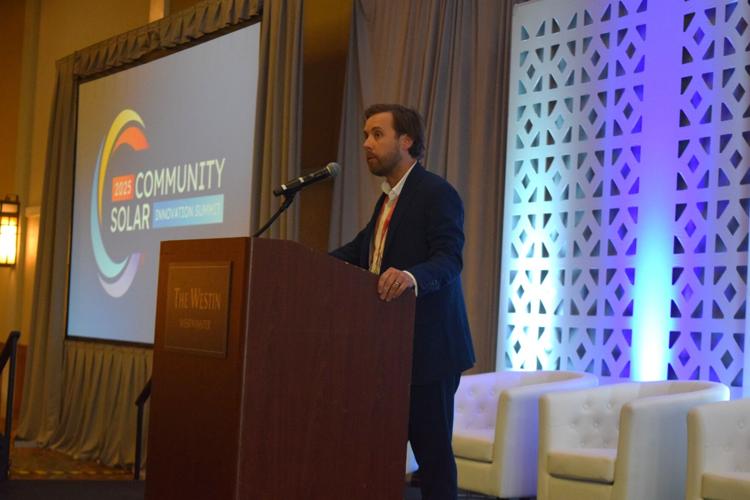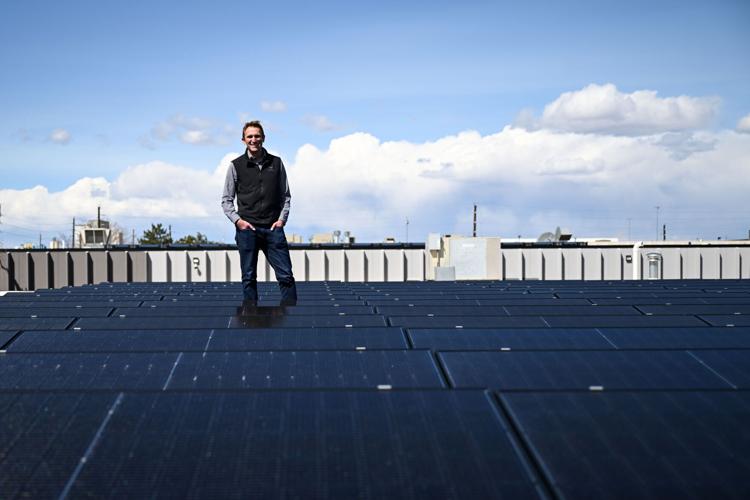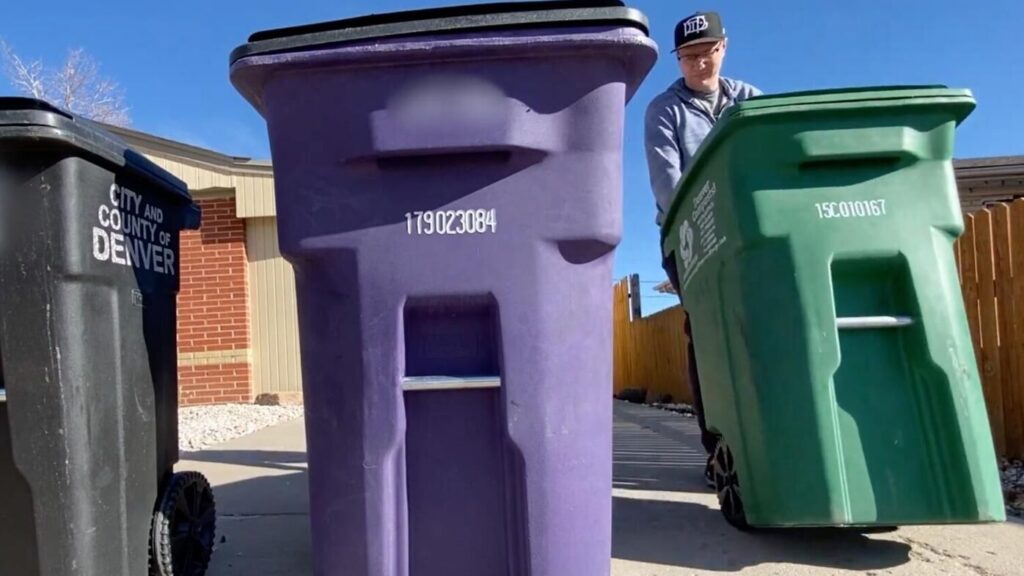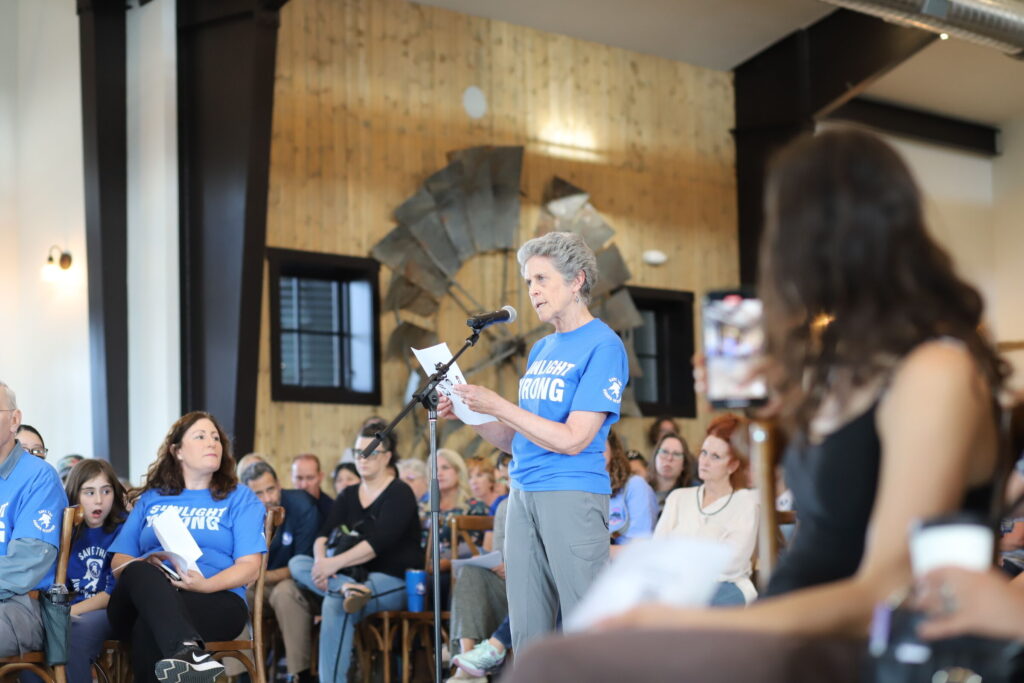Community Solar Innovation Summit discusses future of solar energy amidst potential turmoil
Participants in the annual Coalition for Community Solar Access (CCSA) conference were set to discuss innovations in the energy source this week, but looming legislation thrust the industry’s potentially shaky future into the spotlight.
“We’ve ridden this solar coaster. Uncertainty is something we’ve faced before,” Jeff Cramer, CEO and president of CCSA, said to an audience of more than 500 people at the Westin Westminster hotel Thursday morning.
Community solar is the concept of allowing customers to subscribe to or own a portion of the energy generated by a mid-sized solar array. This could include people without roofs, like renters or businesses. The customer then receives an electric bill credit for electricity generated by their share of the community solar system.
“Farmers, landowners, commercial warehouse owners can all host these projects without imminent domain or taking up other land for a utility scale project,” Stephen Cortes, director of public affairs and communications for CCSA, told The Denver Gazette.
CCSA — a national trade association representing over 125 community solar developers, businesses and nonprofits — hosted its second annual Community Solar Innovation Summit in Westminster on Wednesday and Thursday, continuing into Friday.
“It’s not always in Denver. We typically pick a state where we have one of our more up-front campaigns,” Cortes said. “Colorado was one of the first community solar states in 2015 to open a full enabled community solar program that was done through the state legislature.”
The event brought together industry leaders, policymakers and advocates to discuss and help formulate the future of the energy source throughout the country.
More than 125 community solar developers, businesses and nonprofits attended the event, with more than 50 industry speakers discussing topics like data and the state of community solar in the country.
But the discussion around the Trump administration’s One Big Beautiful Bill Act hovered over the majority of the panels, with potential disarray to the industry if passed by the House of Representatives in its current form.
“We’re in the middle of the federal government ratcheting back all of the investment tax credit,” Cortes said. “Several panels are geared toward that. How are we going to plan around this steep drop off?”
The 1,000-plus page bill aims to preserve an estimated $4.5 trillion in tax cuts that would otherwise expire at year’s end if Congress fails to act — including the Residential Clean Energy Credit or the Solar Investment Tax Credit (ITC).
ITC is a federal tax incentive that allows homeowners to reduce federal income tax based on the cost of installing a solar energy system. The credit is up to 30% until 2032, where it is set to drop down to 26% in 2033 and 22% in 2034.
“We’re going to do what we said we were going to do,” Speaker Mike Johnson said after the House passed the bill last month, pointing toward the extension of tax breaks from Trump’s first administration and the elimination of those created under President Joe Biden’s Inflation Reduction Act.
The current form of the bill would cut the credit nearly nine years earlier, causing potential halts in the creation of new solar arrays and customers throughout the community solar industry.
“The House Bill would kneecap the industry,” Cramer said.
He added: “Perhaps this is the greatest amount of uncertainty we face to date, but I have faith we can do that.”
Salar Naini, president of TurningPoint Energy, said that the stress around the budget reconciliation is just a distraction during a panel of the CCSA’s board members.
“What I’m most excited about is the demand opportunity,” he said. “The load growth that we all have been excited and talking about across the country — whether that’s through data centers, vehicle electrification or the resurgence of manufacturing.”
The panel discussed the nearly five-year natural-gas-fired turbine backlog occurring within the country, causing a higher need and demand for energy sources like solar.
“We are the one answer that’s the fastest and most efficient,” said Erica Brinker, chief commercial officer for Chaberton Energy. “We need to get out there with data and messaging to really communicate that clearly.”
She called the next five years during the shortage of turbines a “runway” for solar to grain ground.
Kelly Friend, senior vice president of policy and markets for Nexamp, echoed the sentiment, adding that while the potential tax credit cuts are an issue, the industry still needs to move forward.
“We have to walk and chew gum at the same time,” she said. “You have to be engaging on the federal stuff while also planning for the future.”
Friend added that the silver lining during the turmoil of the bill is that the industry has had to craft an “authentic, data-driven message on why energy matters — not because of your personal politics, but because of what it means to communities.”
“The local politics of energy is not a partisan issue,” Brinker said. “It needs to turn on when you flip the switch. It needs to be affordable.”
The summit will continue Friday with discussions of distribution solutions and strategies in conservative states. More information can be found at communitysolaraccess.org.
The Associated Press contributed to this report.














